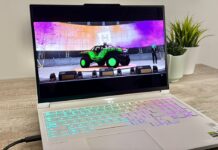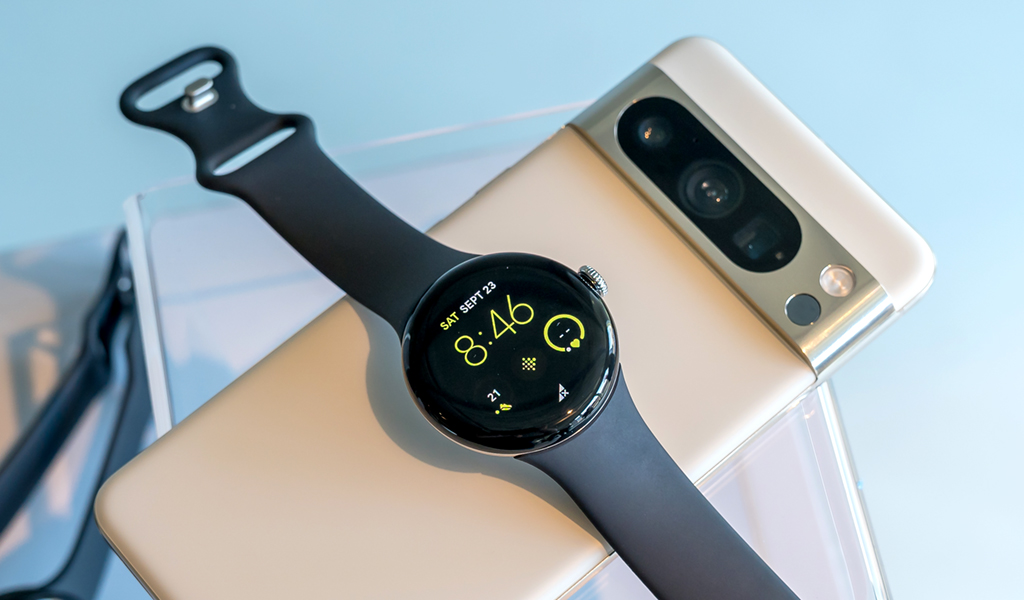
Google is launching a new slate of products, starting with the Pixel 8 Pro and Pixel 8, plus the Pixel Watch 2. As is customary for Google in October, it’s released new flagship phones, which largely look the same as their predecessors, only with several changes to the software to add extra features not seen before. The Pixel Watch 2 also continues Google’s presence in wearables with a smartwatch intended to compete against the best.
Pixel 8 Pro and Pixel 8

Google shaved down just enough from the dimensions for both phones to make them smaller without sacrificing screen size. That means you still get a 6.7-inch OLED (2992 x 1344) with thin bezels around it, along with a 1-120Hz adaptive refresh rate. Not to mention it’s also considerably brighter, hitting 2600 nits peak brightness. One of the differences between these two (among others) is the 8 Pro has Gorilla Glass Victus 2 screen protection, whereas the regular Pixel 8 has Victus, not Victus 2. Both phones are also partly made with recycled materials, have IP68 dust and water resistance and support fast charging with the right wall charger.
The Pixel 8 gets a hair smaller this time with a 6.2-inch OLED (2400 x 1080), only this time goes the full 120Hz with the refresh rate and 2000 nits peak brightness. Both phones should have improved fingerprint sensors and Face Unlock, improving the process to get past the lock screen.
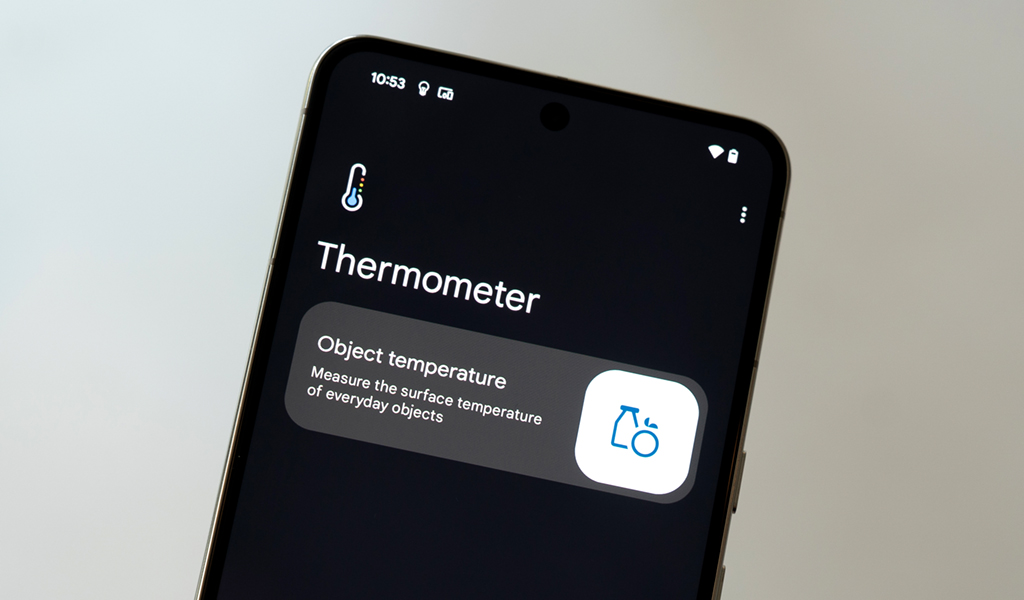
Google’s own Tensor G3 processor powers both phones, including the various new AI-assisted features the company is touting with them. For the first time in a phone, you get a thermometer app that lets you point the phone at an object to get a temperature reading. Call Screen is supposed to be better at calling out spam callers, while Clear Calling will reduce background noise for the caller to help you hear them more clearly. There are also new features on the camera side powered by the Tensor chip.
The Pixel 8 Pro comes with either 128GB, 256GB or 512Gb of storage and 12GB of RAM. The Pixel 8 also comes in 128GB or 256GB with 8GB of RAM. In another first, Google is supporting these two phones with seven years of Android, Feature Drop and security updates.
Camera features
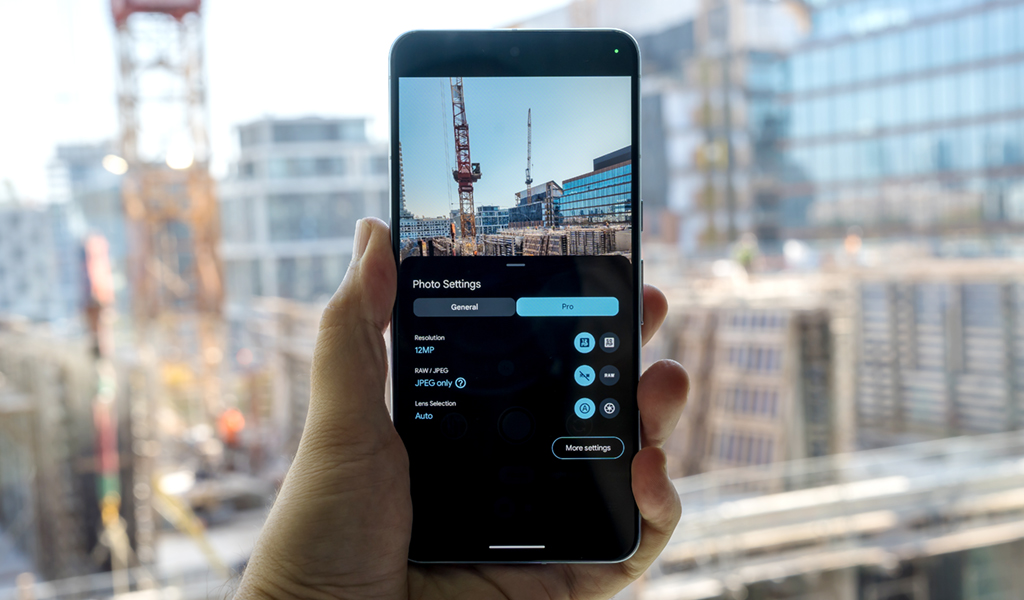
You can expect several changes for the cameras, particularly with the Pixel 8 Pro, which gets more of the new features. The cameras are largely the same as far as image sensors and lenses go, but they’ve been bolstered by more control over how you capture images. A new Pro mode now offers granular control over shutter speed, ISO and manual focus to let you determine the kind of composition you want. It also allows you to shoot at full resolution, capturing images at 50-megapixels, rather than the usual pixel-binned 12.5-megapixels.
Much of what else is new uses AI and machine learning to help you out. Magic Editor enables you to select a specific part of an image—a person, the sky, an object—and apply edits to that element without touching the rest of the image. Magic Eraser also returns and continues to get better. Eventually, new video features like Video Boost and Night Sight Video will bring more professional and low-light amplification to video clips when Google brings that update to the Pixel 8 Pro in the coming months. Another one of those will be Audio Magic Eraser, which will let you cut out as much of the background as possible for clearer audio.
The regular Pixel 8 will get most of these features, save for the manual controls for still images and perhaps some of the new AI features. Technically, the phone has the power to handle all of them, so it remains to be seen if Google eventually updates the device to include them.
Pixel Watch 2
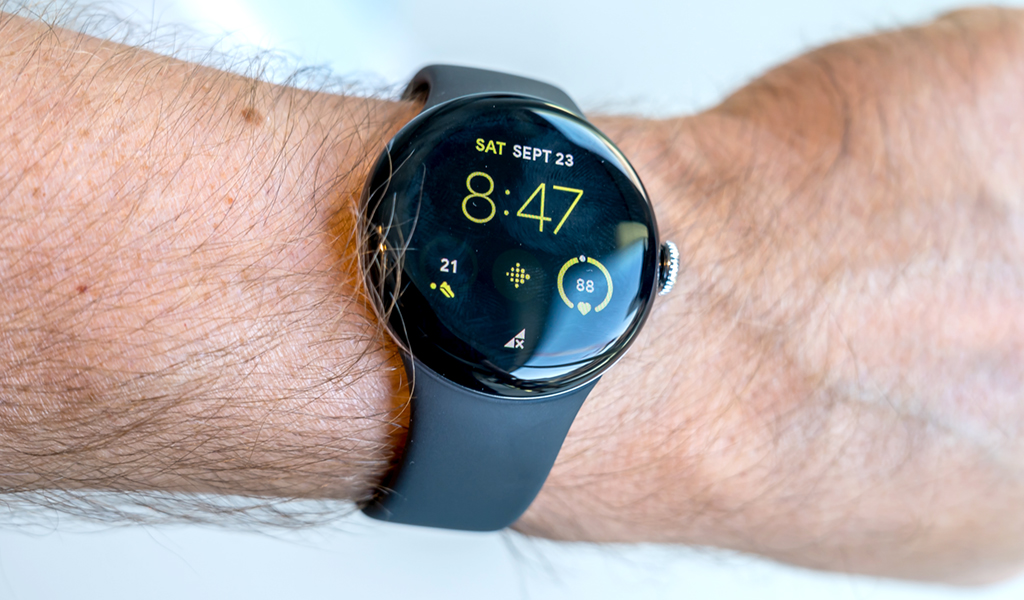
Google follows up its first Pixel Watch with a sequel that covers more ground, particularly on health and fitness. It largely sticks to the same design and dimensions, so won’t feel all that different. It sticks with the same rounded design, using a vibrant screen protected with Gorilla Glass 5 and a digital crown and button on the side. The casing is made with recycled aluminum and will come in the same three colours: matte black, polished silver and champagne gold.
It still only comes in one 41mm size, this time running on Qualcomm’s SW5100 and Google’s Cortex M33 processors, which means you will have both LTE and Bluetooth/Wi-Fi variants. Battery life will likely stay the same at roughly 24 hours, albeit with always-on display active, so we’ll have to see if such an improvement proves true.
It runs on Wear OS 4, has 32GB of onboard storage and IP68 protection with 5ATM waterproofing. Given its similar sizing, you can use bands from the first Pixel Watch on this second version.
Google is also blending in some Fitbit features into the watch, including Stress Management, where it will look for signs of stress and ask you to log your current mood and prompt a breathing exercise. Daily Readiness Score is another one, providing insight into whether your body is ready for a workout or if it’s best to take it easy. The Pixel Watch 2 improves by automatically detecting up to seven exercises, and integrate AI into training regimens to help maximize workouts without pushing too hard and risk injury.
Safety Check is a new one that will prompt you to respond to a prompt, and if you don’t, it will alert your emergency contacts. Think of this as a complement to the existing Fall Detection and Emergency SOS features already available. A new skin temperature sensor is now in the mix, tracking fluctuations during sleep.
Coming soon
You can pre-order the Pixel 8 Pro in obsidian black, porcelain white or bay blue. Or you can get the Pixel 8 in obsidian, hazel or rose. Pre-orders for the Pixel Watch 2 are also now open in any of the three colours. Check out all the latest from Google to see what’s available in the current lineup.




